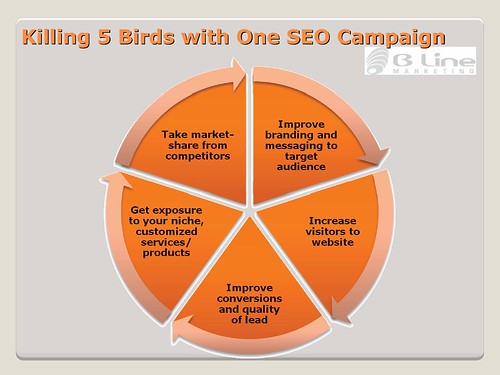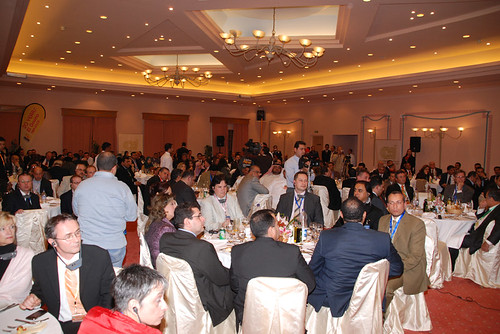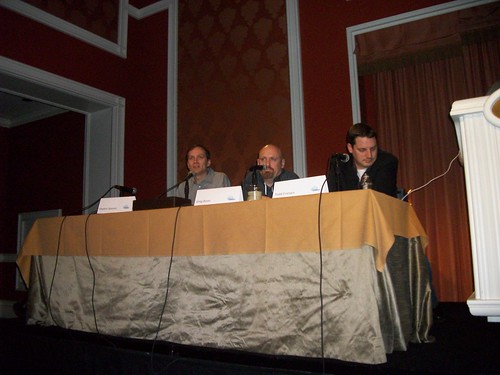A 75-year-old woman was recently arrested by the Georgian police after she single-handedly cut off Internet connections in Georgia and neighbouring Armenia.
AFP reports that the pensioner was digging for scrap metal with the intention of stealing it when she stumbled upon a fibre-optic cable which runs through Georgia to Armenia, forcing thousands of Internet users in both countries to lose Internet connection for several hours. Georgian Railway Telecom, the company that owns the cable, said that the latest damage was serious, causing 90 percent of private and corporate Internet users in Armenia to lose access for nearly 12 hours while also hitting Georgian Internet service providers.
“I cannot understand how this lady managed to find and damage the cable. It has robust protection and such incidents are extremely rare,” Giorgi Ionatamishvili, Georgian Railway Telecom’s marketing head, told AFP.
Apparently, this wasn’t the first time it happened. In 2009, another scavenger damaged a fibre-optic cable while hunting for scrap metal in the impoverished ex-Soviet state, forcing many Georgians’ Internet connections to get interrupted.
The woman has been charged with damaging property and could face up to three years in prison if convicted.
A 75-year-old woman was recently arrested by the Georgian police after she single-handedly cut off Internet connections in Georgia and neighbouring Armenia.
AFP reports that the pensioner was digging for scrap metal with the intention of stealing it when she stumbled upon a fibre-optic cable which runs through Georgia to Armenia, forcing thousands of Internet users in both countries to lose Internet connection for several hours. Georgian Railway Telecom, the company that owns the cable, said that the latest damage was serious, causing 90 percent of private and corporate Internet users in Armenia to lose access for nearly 12 hours while also hitting Georgian Internet service providers.
“I cannot understand how this lady managed to find and damage the cable. It has robust protection and such incidents are extremely rare,” Giorgi Ionatamishvili, Georgian Railway Telecom’s marketing head, told AFP.
Apparently, this wasn’t the first time it happened. In 2009, another scavenger damaged a fibre-optic cable while hunting for scrap metal in the impoverished ex-Soviet state, forcing many Georgians’ Internet connections to get interrupted.
The woman has been charged with damaging property and could face up to three years in prison if convicted.
bench craft company
 Giants ace Tim Lincecum is giving $25,000 to assist the longtime San Francisco fan who was attacked outside Dodger Stadium last month.
Giants ace Tim Lincecum is giving $25,000 to assist the longtime San Francisco fan who was attacked outside Dodger Stadium last month.
bench craft companyRead our Wii news of Mario & Sonic at London Olympics sighted?.
bench craft companyWhile the Google News team has been hard at work redesigning our service for smartphones, we've also been thinking about our milllions of users around the world who access the web not from a smartphone, but from a feature phone, ...
bench craft company Video calls were a mainstay of classic sci-fi films, and even today there’s something almost magical about seeing your friends and family on the screen of a portable device. Video calling has been around for some time, but it’s only really in the past year or so that its got more attention among regular users. That’s thanks in no small part to Apple and FaceTime, as found on the iPhone 4, iPad 2 and other gadgets from the company’s range. Read on as we give FaceTime the full SlashGear 101 treatment!
So Apple invented video calling, right?
No, not at all, though they did do a lot to make it easier to use – just as long as you have the right hardware. Video calling is actually a part of the 3G standard, which – if the carrier and whatever phone you’re using supports it, which isn’t the case in the US – has been available since around 2003. Unfortunately a combination of high pricing, poor understanding by users, mediocre quality and patchy reliability meant this form of video calling has never really taken off.
Apple’s FaceTime takes advantage of the company’s tight control over the iPhone, iPod touch, iPad and MacBook software, which has allowed it to polish the video calling experience to the point where everyday use is possible. Now FaceTime is available to anybody at the touch of an on-screen button.
Do I need an Apple phone to use FaceTime?
Not necessarily a phone, but definitely something with the Apple logo. FaceTime was first supported on the iPhone 4, which was Apple’s first mobile device with a front-facing camera (i.e. one that looks at the user, rather than out the back of the handset). The latest iPod touch and iPad 2 both have front-facing cameras and FaceTime support as well, and Apple has released a FaceTime app for its Mac and MacBook computers so they can join in the fun as well. FaceTime comes free on the mobile devices and the very latest Macs, and is a $0.99 download from the Mac App Store for earlier Mac owners.
Okay, so how do I use it?
It’s pretty simple, just as Apple was aiming for. On the iPhone you make a voice call in the normal way and then tap the FaceTime button on-screen to switch to video. On the iPod touch and iPad 2, you start a video call in the FaceTime app. You’ll need an Apple account in order to make and receive calls, since that’s used as the “phone number” for devices other than the iPhone 4.
Currently, FaceTime video calls can only be made when you have a WiFi connection, not when you’re using the mobile network for data. That’s a limitation Apple has put in place itself, though the company has said it is working on removing it in the future.
I’m not into Apple, can I video call with something else?
You certainly can, though the process gets a bit trickier. Various apps are available for Android and other mobile phone platforms which promise video calls, sometimes over not only WiFi but the 3G mobile networks too. That means you can make video calls when away from your home network or a WiFi hotspot, as long as your signal is strong enough.
Skype, Fring and Qik are all among the companies offering video calling apps, though their effectiveness often varies on a phone-by-phone basis. Not all phones have front-facing cameras, either, though they’re becoming more common on the latest handsets. A future SlashGear 1010 feature will look at the best video calling apps if FaceTime isn’t your thing.
Apple has said it plans to open up FaceTime to other manufacturers, so that non-Apple phones can make and receive calls too, but so far there’s no sign of that actually happening.
More information at Apple’s FaceTime page.
China is a notoriously tough market for American brands. The last few years has seen tech giants like Google struggle to do business due to restrictive censorship and retail giants like Best Buy and Home Depot have found that heavy price competition makes it hard to gain a toehold. Yet, despite the conventional wisdom, Apple’s business in China is booming and it’s not lower prices but better presentation that’s driving their success.
The Chinese economy is having some of its best years ever due to the rising world demand for consumer electronics, much of which is manufactured in China’s city-sized factories. The Mercury News reports that this has led to the average Chinese citizen being more flush with cash than ever before and ready to spend it on what would previously be deemed as unaffordable luxury.
Paul French of Shanghai-based Access Asia indicates that the increase in middle class affluence is behind the increase in purchasing power. “There is now enough of an urban middle class with enough money to afford Apple products. Five years ago — or even two or three years ago — there weren’t enough of those people.”
Five years ago, Apple didn’t have a retail store in China, now it has four, including a stunning split-level glass and metal flagship store in Sanlitun, an area of Beijing known more for its nightlife than its retail outlets. Those stores aren’t barely surviving either, with $2.6 billion in revenue this year, four times what we saw last year from Apple in China. This should mean that Apple is fighting the price war well in China, offering its products for less than they can be purchased in the US, but that’s not actually true. In fact, Apple sells a comparatively specced 13-inch Macbook Air for $180 more in China than it does stateside.
This success seems to fly in the face of conventional wisdom, typically premium products have not sold well in cost conscious China. Some, like Piper Jaffray analyst Gene Munster, say that Apple will have to eventually compete on price or risk losing the Chinese consumer. “The iPhone is going to be huge in China. That’s a given.” he tells the Mercury News. “But if Apple wants it to flow out across China, it has to come up with lower price points.”
Yet Apple shows no signs of slowing down in the Chinese market, which is projected to account for 10 percent of Apple’s revenue within 5 years.
When asked, locals said that in a country where the people like to try products out before they purchase them, Apple is doing the best job of presenting those products. Apple’s retail stores offer the Chinese consumer a chance to test the products in a beautiful and visually stimulating atmosphere and those efforts are paying off with big sales numbers. This kind of attention to the senses and emotions of the consumer wasn’t pioneered by Apple of course, but they are one of the first major companies to bring that kind of experience to China’s city centers in a big way.
This difference in the way that the products are presented is doing its job in separating Apple’s products from the rest of the pack almost everywhere that its retail stores are located, but nowhere is that effect felt more than in China. A country where consumers are hungry for polished products presented in a stimulating atmosphere and they finally have the cash to afford them.
bench craft companybench craft companyNext, Odeo moved into an office and started hiring more employees – including a quiet, on-again, off-again Web designer named Jack Dorsey and an engineer named Blaine Cook. Evan Williams became Odeo's CEO.
By July 2005, Odeo had a product: a platform for podcasting.
But then, in the fall of 2005, "the shit hit the fan," says George Zachary, the Charles River Ventures partner who led the firm's investment in Odeo.
That was when Apple first announced iTunes – which included a podcasting platform built into every one of the 200 million iPods Apple would eventually sell. Around the same time, Odeo employees, from Glass and Williams on down, began to realize that they weren't listening to podcasts as much as they thought they would be.
Says Cook: "We built [Odeo], we tested it a lot, but we never used it."
Suddenly, says Zachary, "the company was going sideways."
By this point, Odeo had 14 people working full time – including now-CEO Evan Williams and a friend of his from Google, Christopher "Biz" Stone.
Williams decided Odeo's future was not in podcasting, and later that year, he told the company's employees to start coming up with ideas for a new direction Odeo could go. The company started holding official "hackathons" where employees would spend a whole day working on projects. They broke off into groups.
Odeo cofounder Noah Glass gravitated toward Jack Dorsey, whom Glass says was "one of the stars of the company." Jack had an idea for a completely different product that revolved around "status"--what people were doing at a given time.
"I got the impression he was unhappy with what he was working on – a lot of cleanup work on Odeo."
"He started talking to me about this idea of status and how he was really interested in status," Glass says. "I was trying to figure out what it was he found compelling about it."
"There was a moment when I was sitting with Jack and I said, 'Oh, I do see how this could really come together to make something really compelling.' We were sitting on Mission St. in the car in the rain. We were going out and I was dropping him off and having this conversation. It all fit together for me."
One day in February 2006, Glass, Dorsey, and a German contract developer Florian Weber presented Jack's idea to the rest of the company. It was a system where you could send a text to one number and it would be broadcasted out to all of your friends: Twttr.
Noah Glass says it was he who came up with the name "Twttr." "I spent a bunch of time thinking about it," he says. Eventually, the name would become Twitter.
After that February presentation to the company, Evan Williams was skeptical of Twitter's potential, but he put Glass in charge of the project. From time to time, Biz Stone helped out Glass's Twitter team.
And it really was Glass's team, by the way. Not Jack Dorsey's.
Everyone agrees that original inkling for Twitter sprang from Jack Dorsey's mind. Dorsey even has drawings of something that looks like Twitter that he made years before he joined Odeo. And Jack was obviously central to the Twitter team.
But all of the early employees and Odeo investors we talked to also agree that no one at Odeo was more passionate about Twitter in the early days than Odeo's cofounder, Noah Glass.
"It was predominantly Noah who pushed for the project to be started," says Blaine Cook, who describes Glass as Twitter's "spiritual leader."
"He definitely had a vision for what it was," says Ray McClure.
"There were two people who were really excited [about Twitter,]" concurs Odeo investor George Zachary. "Jack and Noah Glass. Noah was fanatically excited about Twitter. Fanatically! Evan and Biz weren't at that level. Not remotely."
Zachary says Glass told him, "You know what's awesome about this thing? It makes you feel like you're right with that person. It's a whole emotional impact. You feel like you're connected with that person."
At one point the entire early Twitter service was running on Glass's laptop. "An IBM Thinkpad," Glass says, "Using a Verizon wireless card."
"It was right there on my desk. I could just pick it up and take it anywhere in the world. That was a really fun time."
Glass insists that he is not Twitter's sole founder or anything like it. But he feels betrayed that his role has basically been expunged from Twitter history. He says Florian Weber doesn't get enough credit, either.
"Some people have gotten credit, some people haven't. The reality is it was a group effort. I didn't create Twitter on my own. It came out of conversations."
"I do know that without me, Twitter wouldn't exist. In a huge way."
By March of 2006, Odeo had a working Twitter prototype. In July, TechCrunch covered Twttr for the first time. That same summer, Odeo employees obsessed with Twitter were racking up monthly SMS bills totalling hundreds of dollars. The company agreed to pay those bills for the employees. In August, a small earthquake shook San Francisco and word quickly spread through Twitter – an early 'ah-ha!' moment for users and company-watchers alike. By that fall, Twitter had thousands of users.
By this point, engineer Blaine Cook says it began to feel like there were "two companies" at Odeo – the one "Noah and Florian and Jack and Biz were working on" (Twitter) and Odeo. Twitter, says Ray McClure, "was definitely the thing you wanted to be working on."
Next, Odeo moved into an office and started hiring more employees – including a quiet, on-again, off-again Web designer named Jack Dorsey and an engineer named Blaine Cook. Evan Williams became Odeo's CEO.
By July 2005, Odeo had a product: a platform for podcasting.
But then, in the fall of 2005, "the shit hit the fan," says George Zachary, the Charles River Ventures partner who led the firm's investment in Odeo.
That was when Apple first announced iTunes – which included a podcasting platform built into every one of the 200 million iPods Apple would eventually sell. Around the same time, Odeo employees, from Glass and Williams on down, began to realize that they weren't listening to podcasts as much as they thought they would be.
Says Cook: "We built [Odeo], we tested it a lot, but we never used it."
Suddenly, says Zachary, "the company was going sideways."
By this point, Odeo had 14 people working full time – including now-CEO Evan Williams and a friend of his from Google, Christopher "Biz" Stone.
Williams decided Odeo's future was not in podcasting, and later that year, he told the company's employees to start coming up with ideas for a new direction Odeo could go. The company started holding official "hackathons" where employees would spend a whole day working on projects. They broke off into groups.
Odeo cofounder Noah Glass gravitated toward Jack Dorsey, whom Glass says was "one of the stars of the company." Jack had an idea for a completely different product that revolved around "status"--what people were doing at a given time.
"I got the impression he was unhappy with what he was working on – a lot of cleanup work on Odeo."
"He started talking to me about this idea of status and how he was really interested in status," Glass says. "I was trying to figure out what it was he found compelling about it."
"There was a moment when I was sitting with Jack and I said, 'Oh, I do see how this could really come together to make something really compelling.' We were sitting on Mission St. in the car in the rain. We were going out and I was dropping him off and having this conversation. It all fit together for me."
One day in February 2006, Glass, Dorsey, and a German contract developer Florian Weber presented Jack's idea to the rest of the company. It was a system where you could send a text to one number and it would be broadcasted out to all of your friends: Twttr.
Noah Glass says it was he who came up with the name "Twttr." "I spent a bunch of time thinking about it," he says. Eventually, the name would become Twitter.
After that February presentation to the company, Evan Williams was skeptical of Twitter's potential, but he put Glass in charge of the project. From time to time, Biz Stone helped out Glass's Twitter team.
And it really was Glass's team, by the way. Not Jack Dorsey's.
Everyone agrees that original inkling for Twitter sprang from Jack Dorsey's mind. Dorsey even has drawings of something that looks like Twitter that he made years before he joined Odeo. And Jack was obviously central to the Twitter team.
But all of the early employees and Odeo investors we talked to also agree that no one at Odeo was more passionate about Twitter in the early days than Odeo's cofounder, Noah Glass.
"It was predominantly Noah who pushed for the project to be started," says Blaine Cook, who describes Glass as Twitter's "spiritual leader."
"He definitely had a vision for what it was," says Ray McClure.
"There were two people who were really excited [about Twitter,]" concurs Odeo investor George Zachary. "Jack and Noah Glass. Noah was fanatically excited about Twitter. Fanatically! Evan and Biz weren't at that level. Not remotely."
Zachary says Glass told him, "You know what's awesome about this thing? It makes you feel like you're right with that person. It's a whole emotional impact. You feel like you're connected with that person."
At one point the entire early Twitter service was running on Glass's laptop. "An IBM Thinkpad," Glass says, "Using a Verizon wireless card."
"It was right there on my desk. I could just pick it up and take it anywhere in the world. That was a really fun time."
Glass insists that he is not Twitter's sole founder or anything like it. But he feels betrayed that his role has basically been expunged from Twitter history. He says Florian Weber doesn't get enough credit, either.
"Some people have gotten credit, some people haven't. The reality is it was a group effort. I didn't create Twitter on my own. It came out of conversations."
"I do know that without me, Twitter wouldn't exist. In a huge way."
By March of 2006, Odeo had a working Twitter prototype. In July, TechCrunch covered Twttr for the first time. That same summer, Odeo employees obsessed with Twitter were racking up monthly SMS bills totalling hundreds of dollars. The company agreed to pay those bills for the employees. In August, a small earthquake shook San Francisco and word quickly spread through Twitter – an early 'ah-ha!' moment for users and company-watchers alike. By that fall, Twitter had thousands of users.
By this point, engineer Blaine Cook says it began to feel like there were "two companies" at Odeo – the one "Noah and Florian and Jack and Biz were working on" (Twitter) and Odeo. Twitter, says Ray McClure, "was definitely the thing you wanted to be working on."
bench craft companySo we have rolled out a redesigned Google News for Opera Mini in all 29 languages and 70 editions of Google News. This includes an enhanced homepage featuring richer snippets, thumbnail images, links to videos and section content ...
bench craft companyTrackBack. TrackBack URL for this entry: http://www.typepad.com/services/trackback/6a00d8341bfae553ef01538dd79809970b. Listed below are links to weblogs that reference MRSA News: ...











